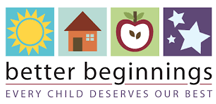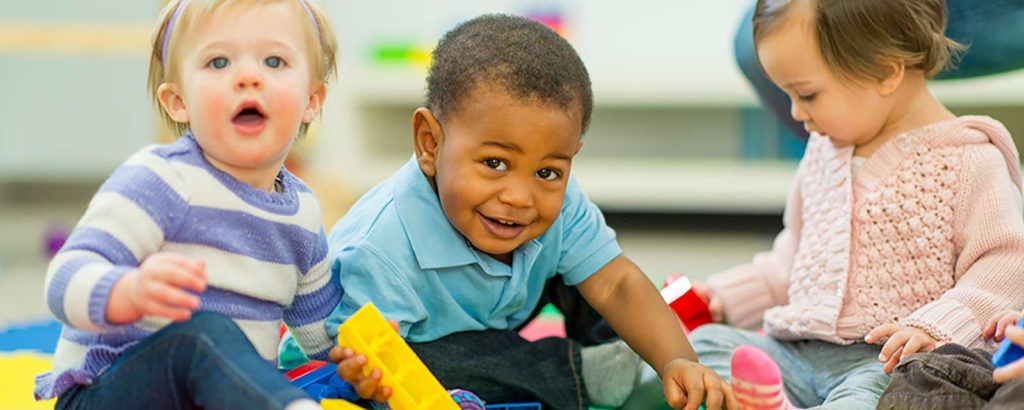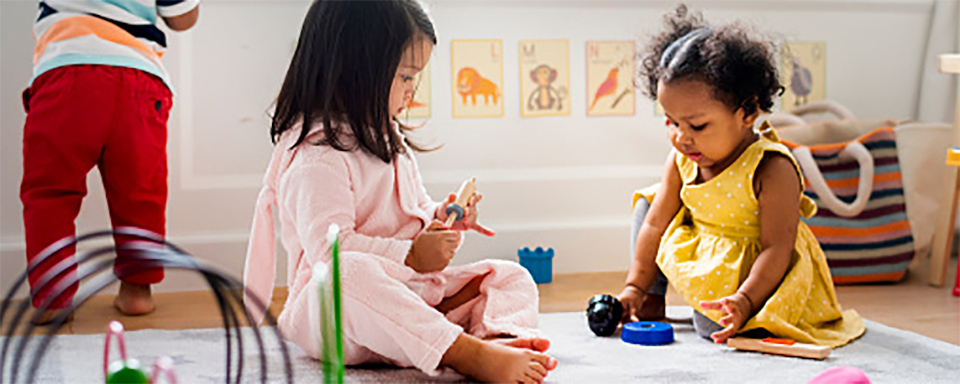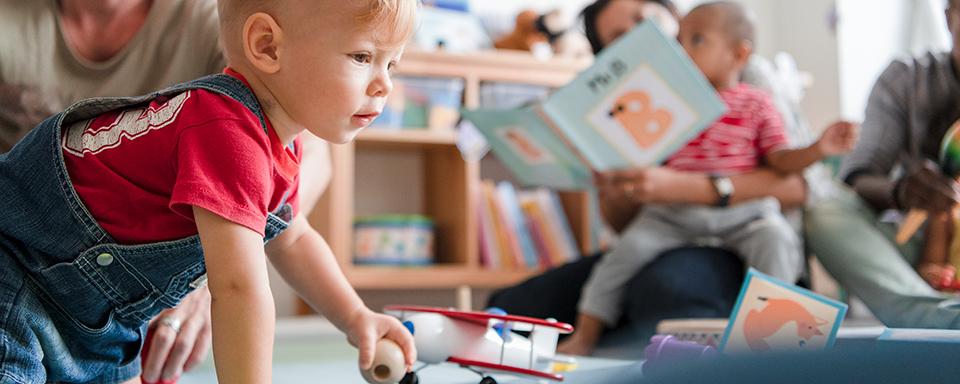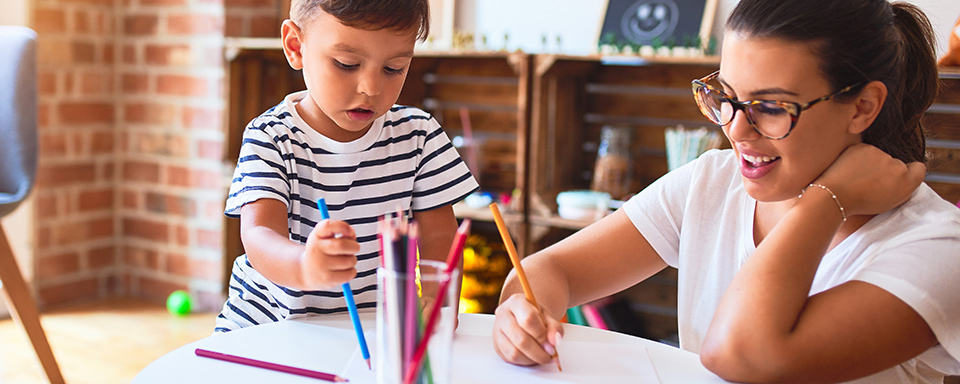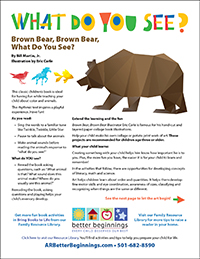Brown Bear, Brown Bear, What Do You See?
By Bill Martin, Jr.
Illustration by Eric Carle
- This classic children’s book is ideal for having fun while teaching your child about color and animals.
- The rhythmic text inspires a playful experience. Have fun!
As you read:
- Sing the words to a familiar tune like Twinkle, Twinkle, Little Star
- Pause to talk about the animals
- Make animal sounds before reading the animal’s response to “what do you see?”
What do YOU see?
- Read the book again asking questions, such as: “What animal is that? What sound does this animal make? Where do you usually see this animal?”
When you read the book again, asking questions and playing helps your child’s memory develop.
Extend the learning and the fun
Brown Bear, Brown Bear illustrator Eric Carle is famous for his hand-cut and layered paper collage book illustrations.
Help your child make his own collage or potato print work of art. These projects are recommended for children age three or older.
What your child learns:
Creating something with your child helps him know how important he is to you. Plus, the more fun you have, the easier it is for your child to learn and remember!
In the activities that follow, there are opportunities for developing concepts of literacy, math and science. Art helps children learn about order and quantities. It helps them develop fine motor skills and eye coordination, awareness of sizes, classifying and recognizing when things are the same or different.
What do you see? Colors and Shapes!
Collage Art
Materials:
- Recycled cardboard or stiff paper for a canvas
- Colored paper: recycled magazine pages, gift wrap, white paper your child has colored or construction paper (light weight enough for your child to tear)
- Glue or paste
- Brush or cotton swabs
- Newspaper or other materials to protect home and clothing from glue
How to:
Collage art is simply gluing materials to a flat surface. Your child may create a shape, flower, animal or colorful abstract.
Ask your child to tear the paper in small pieces in a variety of shapes and sort by color. Set up the remaining materials and let him create.
See our easy paste recipe.
Taste-safe Homemade Paste
Ingredients:
- 1/2 cup flour
- 1/2 cup warm water (approx. amount)
- Place flour in a medium mixing bowl. Slowly stir in water to desired consistency. Store in an airtight container and refrigerate.
Potato Print Art
Materials:
- Paper
- Paint
- Veggie stamps
To help your child learn colors and shapes, make square, rectangle and triangle stamps. You have a natural circle with your first cut.
Use one color paint for each stamp shape. Talk about the color and shape as you create.
No paint? No worries. See our taste-safe paint recipe.
Who says you have to use potatoes? Other fruits and veggies make excellent print tools.
Some fruits and veggies have a natural handle: cucumbers, carrots, zucchini and yellow squash. If you use a potato, be sure to cut out a “handle” your child can grasp.
Taste-safe Homemade Paint
Ingredients:
- 1 cup flour
- 2 cups warm water (approx. amount)
- Food coloring
PARENTAL SUPERVISION IS ESSENTIAL.
- Food coloring will stain. Protect your work surfaces and clothing.
- Place flour in a medium mixing bowl and slowly stir in the water. Stir until smooth.
- Pour base paint into several small containers. Stir in food coloring until you have the desired color.
NOTE: the white base makes colors appear more muted than the food coloring.
- Store in airtight containers and refrigerate.
These activities are recommended for children age three and older.
Activities should always have parental participation.
Only adults should use knives.
View/Download the PDF version here. (Right click and choose “Save Link As” to download)
Get more fun book activities in Bring Books to Life from our Family Resource Library.
